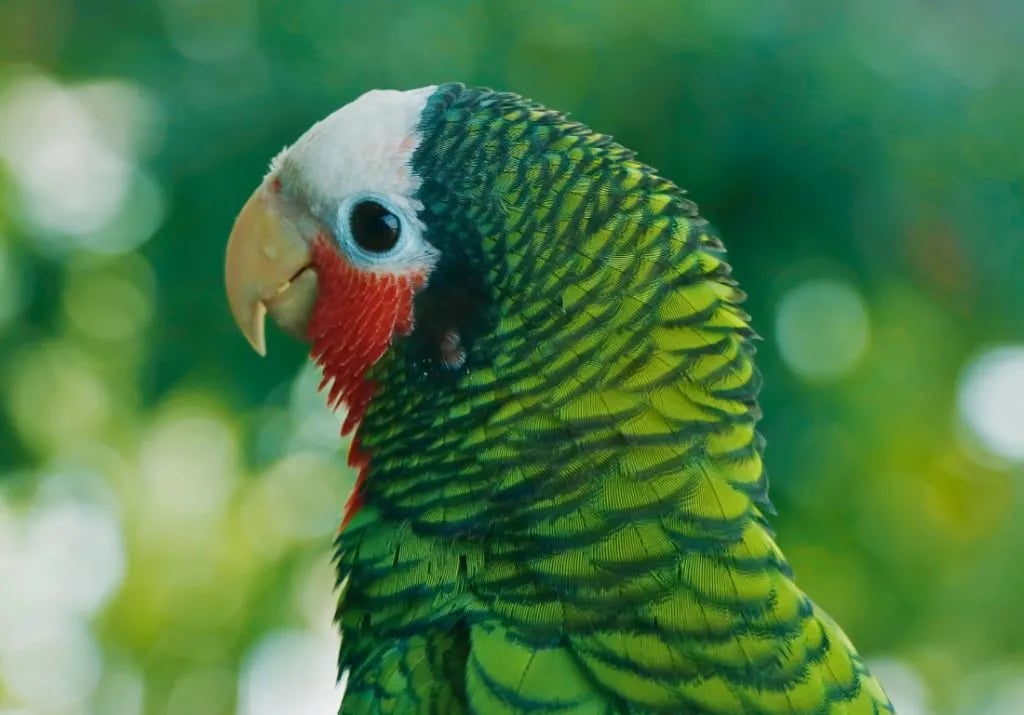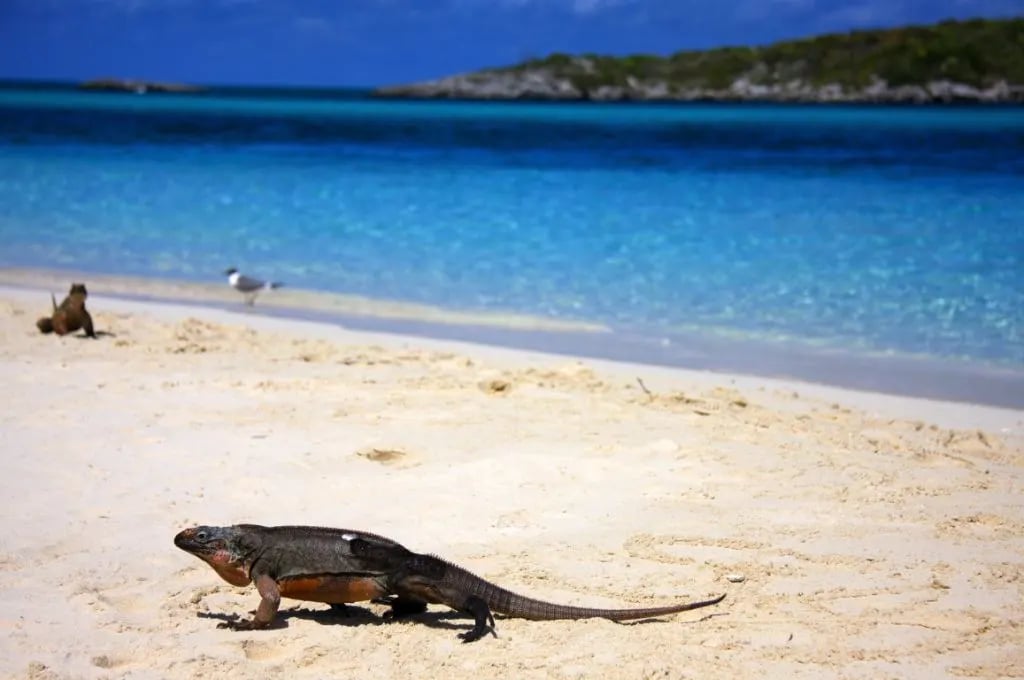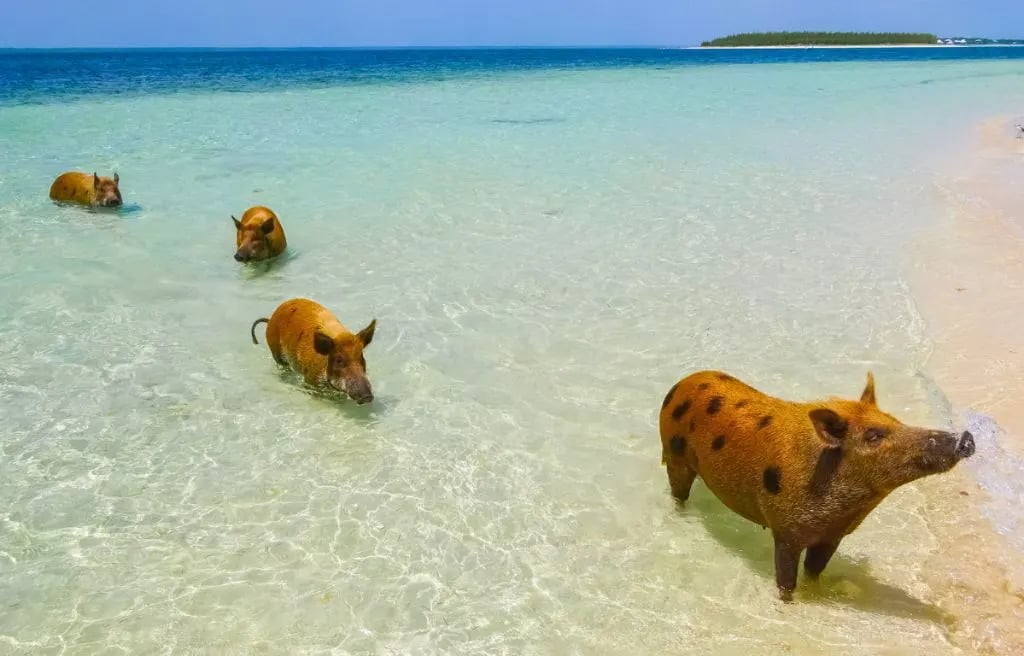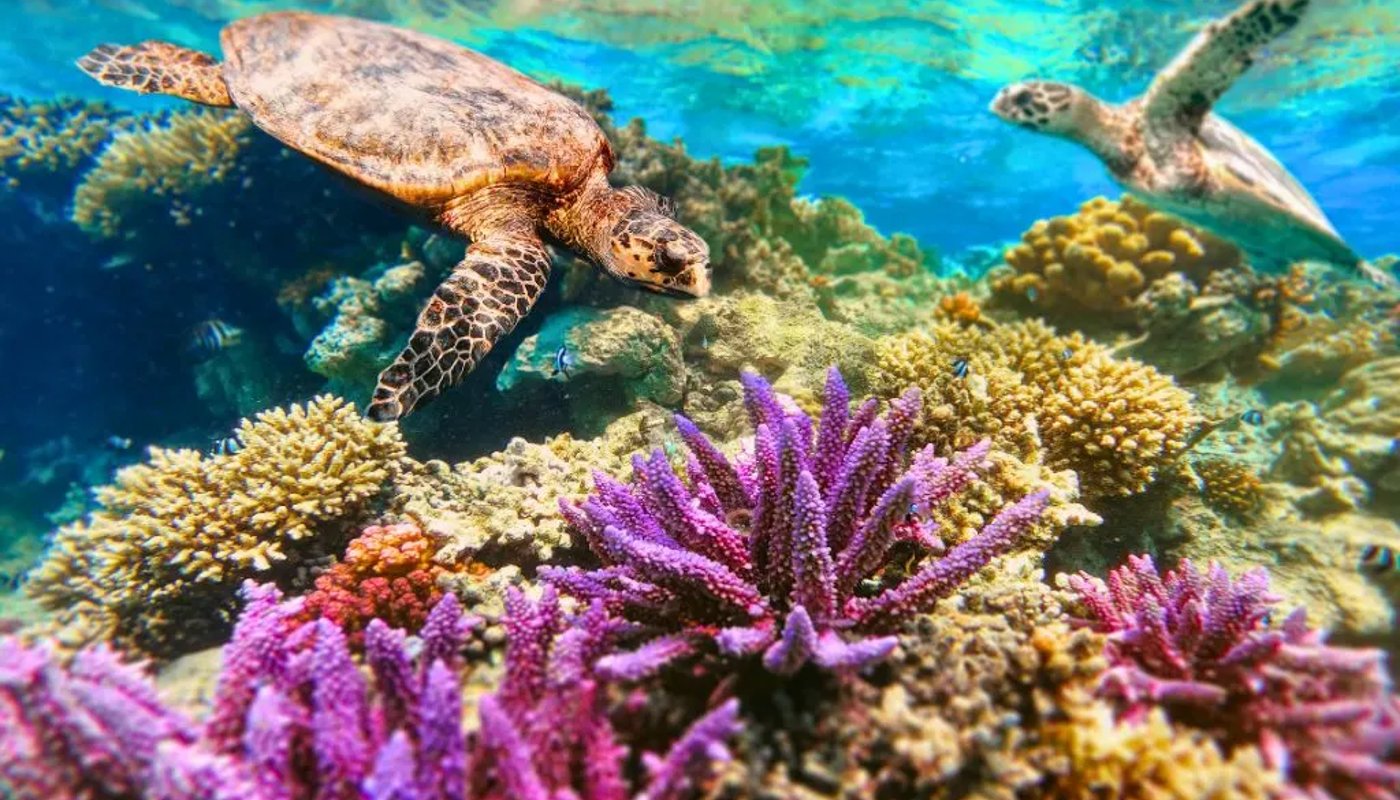Exploring the Fascinating Animals in the Bahamas: A Comprehensive Guide
Sunshine? Easy. Crystal-clear water? Always. But let’s skip the brochure and talk about what actually makes the Bahamas feel alive—the animals.
From the famous swimming pigs to technicolor coral dwellers and prehistoric-looking iguanas, the animals in the Bahamas are as iconic as the beaches. This isn't just a tropical escape—it’s an ecosystem brimming with character. The islands are home to Bahamian wildlife found nowhere else, and most of it roams free, no cages, no barriers—just nature doing its thing.
Whether you're a wildlife enthusiast or someone who just wants to float near a turtle without panicking, this guide is your backstage pass to one of the richest natural environments in the Atlantic. The animals in the Bahamas aren't just a bonus—they're the reason to explore.
Where wild animals in the Bahamas really shine
The Bahamas isn’t one island. It’s more than 700 islands and over 2,000 cays, scattered like confetti across the Atlantic. That setup creates a playground of micro-habitats—each with its own distinct cast of characters. The result? A level of biodiversity that punches way above sea level.
The animals in the Bahamas live across wildly different ecosystems, and some of them exist only here:
Coral reefs are packed with electric-colored Bahamas reef fish and invertebrates
Pine forests echo with the calls of rare birds like the Bahama nuthatch
Mangroves and wetlands serve as nurseries for marine species, including juvenile sharks and sea turtles
Dry scrub islands are ruled by rock iguanas—massive, plant-eating reptiles found nowhere else
Because so many islands are isolated, a large number of species are endemic—meaning they evolved here and live nowhere else on Earth. It’s evolution unplugged. Nature got creative, and Bahamian wildlife is the result.
Why Bahamian wildlife needs protecting
It may look like paradise, but not every creature in the Bahamas is thriving.
Even with protected areas in place, wild animals in the Bahamas face real threats. Habitat destruction from development continues to chip away at critical ecosystems. Invasive species—like feral cats, rats, and even goats—disrupt fragile food chains. And climate change? It’s already warming waters, bleaching corals, and putting pressure on nesting grounds for sea turtles in the Bahamas.
Some of the most at-risk species include:
The Bahama parrot
The Andros rock iguana
Nassau grouper
Hawksbill and green turtles
But there’s hope. Conservation groups like the Bahamas National Trust, Reef Rescue Network, and the Atlantis Blue Project Foundation are restoring coral reefs, protecting nesting beaches, and monitoring endangered species. And eco-conscious tourism helps fund and promote that work—when it’s done the right way.

Meet the wild animals in the Bahamas you’ll actually see
Let’s get into it. These are the wild animals in the Bahamas you’re most likely to encounter—some adorable, some bizarre, and a few that definitely don’t want to be touched (looking at you, stingrays).
Bahamas reef fish: nature’s underwater confetti
Slip on a snorkel mask and the world turns into a living aquarium. Bahamas reef fish aren’t just colorful—they’re essential to coral reef health and some of the most charismatic animals in the Bahamas. You’ll see these guys dancing through the shallows like they own the place.
Fish to watch for:
Parrotfish – Flashy, with beak-like mouths made for chomping coral. They grind it into sand, which is exactly what ends up between your toes on the beach.
Blue tang – Bright blue and school-loving. (Yes, they look like Dory, but they’re native here.)
Stoplight parrotfish – Gender-bending and color-shifting. A true reef showoff.
Squirrelfish – Big eyes, nocturnal moves, and a talent for hiding in reef cracks during the day.
Yellowtail snapper – Striped, fast, and usually cruising in groups near coral shelves.
Whether you’re free diving or floating with a GoPro, Bahamian wildlife doesn’t get more photogenic than this.
Bahamian rock iguana: the island’s dinosaur-in-residence
Among the most fascinating animals in the Bahamas is the Bahamian rock iguana—a giant lizard that looks like it stepped straight out of prehistory. These herbivorous reptiles are only found in the Bahamas and are so rare, conservationists watch them like hawks.
Need-to-knows:
They can grow up to four feet long, with muscular limbs and spiky crests
Their diet? Mostly fruit, leaves, and the occasional flower snack
You’ll spot them on remote islands like Bitter Guana Cay, where they roam in the sun like chilled-out dragons
They’re critically endangered, so no feeding, no petting, no chasing for selfies
Respectful tours let you observe them in their natural habitat—just keep your fruit in your bag and your distance.

American Kestrel: tiny falcon, massive energy
Not all Bahamian wildlife is found in the sea or on the sand. The American kestrel is a pint-sized predator that brings the drama to the skies. This island-dwelling subspecies of the American kestrel is the national bird for a reason—it’s fast, focused, and ridiculously cool to watch.
Where to find them:
Perched on fence posts or power lines, scanning for snacks
Darting through open fields with precise aerial dives
Hunting grasshoppers, lizards, and small rodents mid-flight
Despite their size, these falcons are fierce. If you’re lucky enough to catch one in action, you’re watching Bahamian wildlife at its most high-speed and high-stakes.
Bahamian raccoon: the clever island scavenger
If you hear rustling in the bushes after sunset, there’s a good chance it’s a Bahamian raccoon. These little bandits are smaller and leaner than their North American cousins, but just as crafty. They’ve adapted surprisingly well to island life and are a regular part of the wildlife in the Bahamas.
Here’s the lowdown:
You’ll usually see them near freshwater sources or mangroves
They're mostly nocturnal, so keep an eye out at dusk
Diet? They’re not picky—crabs, fruits, insects, and whatever’s left behind at a beach picnic
Though wild, they’re used to human presence, so don’t be surprised if they watch you from the shadows
They’re not dangerous, but they will investigate an unattended snack. Just another reminder that animals in the Bahamas are everywhere—even the sneaky ones with paws.
Bahamian wildlife fun fact break!
The Bahamas is home to 13 endemic species of reptiles.
Over 300 bird species either live here or migrate through.
Some fish, like the queen triggerfish, are so brightly colored they look Photoshopped IRL.
Marine life in the Bahamas
If the land animals are cool, the marine life in the Bahamas is on another level entirely. The entire archipelago is basically a giant open-water exhibit—except the residents here aren’t behind glass. From sea turtles to reef sharks, wild animals in the Bahamas don’t just live in the ocean—they put on a show.
The coral reefs are some of the most diverse in the Atlantic. Whether you’re snorkeling off the coast of Andros or floating awkwardly in a rental life vest somewhere in Exuma, you’re almost guaranteed to bump into something unforgettable.
Let’s get into the real stars of the sea.
Sea turtles of the Bahamas
Sea turtles? Absolute icons.
There are five species of sea turtles in the Bahamas, but you’re most likely to come across:
Green sea turtles – Usually grazing peacefully on seagrass beds like chill ocean cows.
Hawksbill turtles – Smaller, vibrant, and often spotted weaving through coral formations.
Loggerhead turtles – Hefty heads, calm demeanor, often cruising solo like they’ve got places to be.
They’re fully protected by Bahamian law, which means no touching, feeding, or chasing. Still, they’re not shy. You can snorkel near them in places like Green Turtle Cay, the Abaco Islands, and the Exuma Cays, especially during early morning tours.
And if you’re around during nesting season? You might just witness baby turtles flapping their way from sand to surf. It's one of the most incredible wildlife moments you can experience in the Caribbean.
Dolphins of the Bahamas: the show-offs of the sea
Dolphins love the Bahamas, and honestly, who wouldn’t? Warm water, endless food, and an audience. These marine mammals have become unofficial tour guides, often swimming alongside boats just to say hello.
You’ll likely see:
Bottlenose dolphins – The celebs of the sea world: friendly, playful, and great at posing for photos.
Atlantic spotted dolphins – Flashier and more acrobatic, often found in pods doing synchronized flips like it's a competition.
The best way to see them? Book a wild dolphin tour—especially in Bimini or Grand Bahama Island. Choose one that respects animal boundaries (no captivity, no forced interactions), so the dolphins run the show—not the humans.
Nurse sharks: chill, misunderstood, and surprisingly pettable
Let’s talk sharks—but hold the panic.
Nurse sharks are the sleepy bottom-dwellers of Bahamian waters. Despite their intimidating name, they’re basically catfish in shark suits.
Here’s where you’ll spot them:
Lounging under docks in shallow coves
Hovering around dive spots like Compass Cay and Staniel Cay
Cruising slowly through the water like underwater Roombas
These aren’t dangerous animals in the Bahamas—they’re calm and used to humans. You can even swim near them (or with them) on eco-tours, just remember: don’t pull, poke, or “boop” the shark. They’re chill, not chew toys.
Queen conch: the Bahamas’ most stylish sea snail
Yes, a snail made the list—and for good reason.
The queen conch is one of the most recognizable animals in the Bahamas, thanks to its giant spiral shell and its role in everything from local cuisine to cultural festivals. But before it’s on a plate, it’s a surprisingly active sea critter with wild eyes and a snazzy foot it uses to scoot along the ocean floor.
Here’s what you need to know:
Found in seagrass beds and sandy flats across the islands
Known for their stunning pink shells and alien-like eyes
An essential part of both Bahamian ecology and economy
They’re not fast, flashy, or fearsome—but they’re iconic. Conservation efforts are in full swing to protect them, so stick to sustainable conch when dining and admire them in the wild where they belong.
Dangerous animals in the Bahamas
Yes, the Bahamas is paradise—but even paradise has a few critters with attitude. From sharp teeth to painful stings, here’s your guide to the dangerous animals in the Bahamas, plus how to stay safe while still enjoying the view.
Sharks (the non-nurse kind)
Let’s start with the obvious.
While nurse sharks are the calm cousins of the ocean, the Bahamas is home to over 40 shark species, including:
Caribbean reef sharks – Common and curious, often seen on diving tours
Bull sharks – Powerful and unpredictable, usually in deeper channels
Tiger sharks – Known for strong appetites and blunt faces
Hammerheads – Surprisingly graceful, with that iconic wide head
These apex predators play a key role in keeping marine ecosystems healthy, especially on coral reefs. Attacks on humans are extremely rare in Bahamian waters, but common sense goes a long way: skip swimming at dawn or dusk, don’t wear shiny jewelry in the water, and definitely don’t bring bait on your snorkeling trip (seriously, someone tried raw chicken once).
Respect them, don’t provoke them, and they’ll probably ignore you entirely.
Venomous snakes
Snake fear? You can breathe easy.
The Bahamas has no venomous snakes. Not one. Zero.
You might see a Bahamian boa—a large, non-venomous constrictor that helps manage rodent populations. They’re more scared of you than you are of them, and they’re important for the local ecosystem.
So while snakes are part of Bahamian wildlife, they’re definitely not on the list of threats. Just snap a photo (from a distance) and keep it moving.
Poisonous jellyfish
If you're wading into turquoise perfection, just know a few jellyfish might be floating around.
Here’s who to watch out for:
Moon jellies – Common with a mild sting, usually not a big deal
Sea wasps – A cousin of the box jellyfish, more rare but not pleasant
Portuguese man o’ war – Not technically a jellyfish, but it hurts if you touch one
Stings range from annoying to “why did I go in the ocean today?” but they rarely require serious treatment. Vinegar can neutralize the sting, and lifeguards usually have what you need.
After a storm, it’s smart to keep your eyes open and maybe skip barefoot strolls through seaweed piles.
Lionfish: stunning, spiny, and not to be touched
They look like underwater royalty, but lionfish come with a catch—venomous spines that can cause swelling, pain, and in rare cases, nausea or difficulty breathing.
Originally from the Indo-Pacific, lionfish are invasive to the Bahamas and threaten native Bahamas reef fish populations by overhunting juvenile species. You’ll see them hovering near coral heads, fanning their long fins like peacocks of the sea.
Divers sometimes spear them as part of conservation efforts, and local chefs have turned them into a surprisingly tasty (and sustainable) dish. But in the water? Keep your hands to yourself. Touching a lionfish is an easy way to end your snorkel early.
Unique experiences with Bahamian wildlife
Alright, enough with the warnings—let’s talk about the animals in the Bahamas that will make your trip unforgettable.
Swimming with pigs
It’s the one experience everyone talks about—and for good reason. Swimming with pigs in the Bahamas is a must-do for any traveler with a love for quirky wildlife. These wild, yet friendly pigs are not just limited to Big Major Cay (also known as Pig Beach) in the Exumas.
They’ve been spotted on several other islands in the Bahamas, including Exuma Cays, Pig Island near Ragged Island, and Cocoa Cay in the Abacos. Each spot offers its own unique experience, but the pigs are always eager to greet you, often swimming out to meet boats in search of a snack and a photo op.
How did they end up here? Theories abound: they could be shipwreck survivors, pirate pets, or maybe even an elaborate marketing stunt. But really, does it matter? They’re here now, living their best life.
What to know before you go:
Bring pig-friendly snacks (approved by your tour guide)
Keep your fingers out of their mouths (they’re cute but feisty)
Don’t expect cuddles—they might be adorable, but they’re not that kind of friendly
These pigs are basically the Kardashians of Bahamian wildlife—always stealing the spotlight, and doing the most with the least. Want to swim with them? Tour Daddy’s Swimming Pigs Tours is your go-to for an ethical, unforgettable experience.

Birdwatching adventures
If swimming pigs aren't your thing, how about birds that can clock thousands of miles just to land in the Bahamas for a pit stop?
The islands are a hotspot for Bahamian wildlife, especially feathered travelers. Whether you're a full-on birder or someone who just likes the occasional bird selfie, the Bahamas delivers.
Inagua National Park is legendary. It’s home to over 50,000 West Indian flamingos, the national bird of the Bahamas. When they take flight together? It’s like watching a coral-pink thunderstorm move across the sky.
Abaco National Park gives you front-row seats to one of the rarest parrots on Earth—the Bahama parrot—plus sightings of Cuban emerald hummingbirds and the occasional Bahama woodstar zipping through the trees.
Lucayan National Park on Grand Bahama is another goldmine for birdwatchers. Herons, egrets, warblers, and more all hang out here. The bonus? You’ll likely get some bird action while exploring one of the largest underwater cave systems in the world.
Whether you're chasing lifers or just love watching nature do its thing, birdwatching in the Bahamas is wild in the best way.
Eco-tours and wildlife reserves
If you're looking to experience the wild animals in the Bahamas responsibly—and get a serious nature fix while you're at it—book an eco-tour.
These aren't your average walk-in-the-park kind of tours. We're talking full-on Bahamian wildlife immersion, often with certified guides who know their rock iguanas from their curly-tailed lizards.
Top eco-tour and reserve picks:
Exuma Cays Land and Sea Park – A no-take marine protected area that's bursting with life. Think: vibrant Bahamas reef fish, endangered sea turtles, eagle rays, and nurse sharks cruising by coral walls.
Baha Mar Wildlife Sanctuary – Located on New Providence, this sanctuary gives families a hands-on way to meet some of the coolest animals in the Bahamas—while also learning how to protect them.
The Retreat Garden in Nassau – Less ocean, more forest. This tropical botanical garden doubles as a haven for native species like lizards, birds, and butterflies.
UNEXSO Dolphin & Snorkel Tours – These encounters with marine mammals and fish in Grand Bahama focus on ethical interaction and marine conservation. You’ll leave with more than just underwater photos.
Every one of these tours supports local conservation. You get to see stunning creatures like sea turtles in the Bahamas or rare birds, and your money helps keep their habitats intact. That’s what we call traveling with purpose.
Wildlife highlights recap
Let’s run it back. The animals in the Bahamas aren’t just camera-friendly—they’re evolutionary icons.
Rock iguanas sunbathe on remote beaches like they own the place (because they kind of do).
Reef fish shimmer through turquoise waters like living confetti.
Sea turtles drift through seagrass beds like floating dinosaurs.
Sharks, from nurse sharks to reef sharks, remind you who really rules the reef.
Flamingos? Loud, fabulous, and always dressed to impress.
And yes, those now-Instagram-famous pigs in the Exumas still swim for snacks and glory.
Whether you’re wading into a marine park or trekking through pine forests, wild animals in the Bahamas are always just around the corner.
The importance of responsible tourism
Here’s the thing: the Bahamian wildlife you came to see? It needs your help.
Every flamingo, shark, iguana, and sea turtle you encounter is part of a delicate ecosystem that’s constantly under pressure—from climate change to careless tourists. The good news? You can make a difference without giving up the adventure.
Don’t touch or feed wild animals (including the pigs—they're cute, but they’re still wild).
Always pack out what you pack in. Especially plastics.
Book with local guides and conservation-based tours.
Stay behind the signs and never disturb nesting or feeding sites.
Small actions = big impact. When travelers act responsibly, the dangerous animals in the Bahamas (like sharks or jellyfish) stay in balance with the rest of the ecosystem—and the friendly ones keep thriving too.
Your go-to operators for environmentally responsible tours? That would be Tour Daddy; they value conservation and the environmental impact of their actions. They are also a proud donor to the Bahamas National Trust, which supports marine life and national parks.
Travel wisely, and the Bahamas remains a paradise—for the animals and you.

